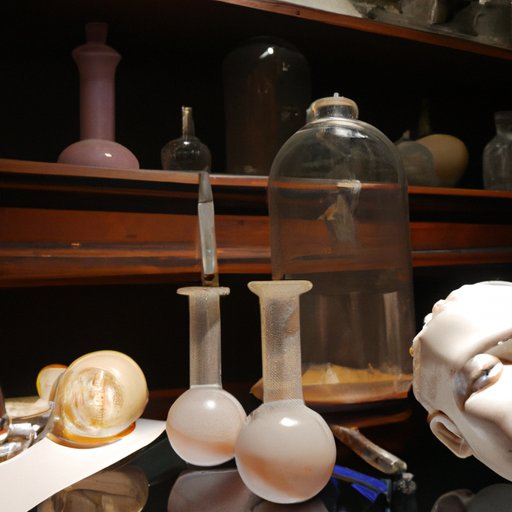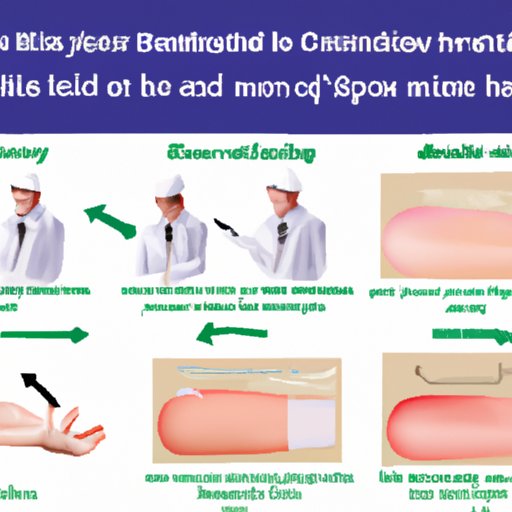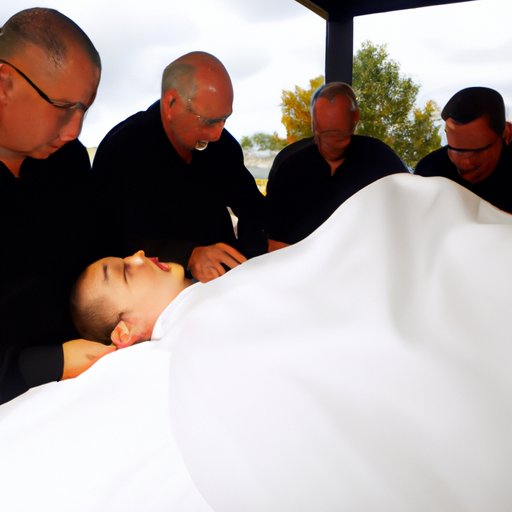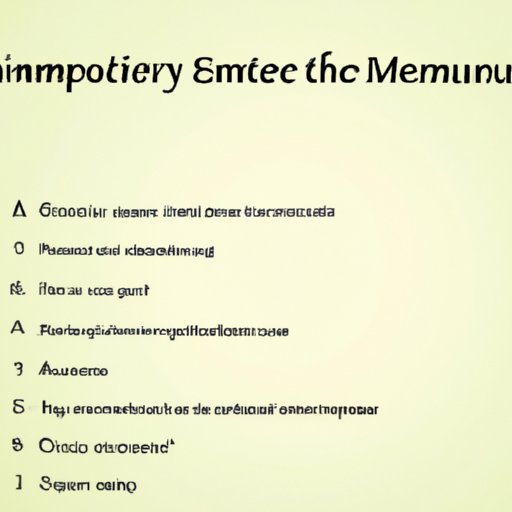Introduction
Embalming is the practice of preserving human remains by treating them with chemicals to delay decomposition. This process has been used for thousands of years in various cultures around the world, and today it is commonly performed in many countries. The purpose of embalming is to temporarily preserve the body for viewing purposes or to prepare it for transport if the remains are being shipped to another location.

Exploring the History and Science of Embalming
The practice of embalming dates back to ancient Egypt, where mummification was used to preserve the bodies of the pharaohs and other important figures in society. The Egyptians believed that mummification would help the deceased make a safe journey into the afterlife. Over time, the art of embalming spread to other parts of the world, including Europe, Asia, and the Americas.
Today, embalming is typically done using a combination of chemicals and techniques designed to slow down the decomposition process. The basic embalming process involves draining the body of all fluids, disinfecting it, and then injecting it with a preservative solution. This solution usually contains a mixture of formaldehyde, ethanol, and other chemicals.
A Step-by-Step Guide to Embalming
If you’re curious about how the embalming process works, here is a step-by-step guide:
1. Preparing the body: The first step is to clean the body and remove any clothing or jewelry. The hair is often washed and the nails trimmed. The eyes and mouth are closed and the body is placed on a table.
2. Injecting chemicals into the body: Next, a preservative solution is injected into the arteries of the body. This solution helps to preserve the tissues and keep them from decaying. The injection process can take several hours to complete.
3. Sewing up the incisions: Once the injection process is complete, the incisions are sewn up and the body is ready for viewing or transport.

Understanding the Different Types of Embalming Procedures
There are three main types of embalming procedures: cosmetic, restorative, and sanitary.
Cosmetic embalming: This procedure involves making the body look as natural as possible. Chemicals are used to restore the color of the skin and to mask the signs of decomposition.
Restorative embalming: This procedure is used to restore the body to its original appearance. It involves reconstructing the facial features and replacing missing parts of the body.
Sanitary embalming: This procedure is used to reduce the risk of infectious diseases. It involves using germicides to disinfect the body and prevent the spread of bacteria.

Examining the Benefits and Risks Associated with Embalming
Embalming has both advantages and disadvantages.
Advantages of embalming: One of the main benefits of embalming is that it allows families to have an open-casket funeral, which can give them a chance to say goodbye to their loved one. It also gives them more time to plan a funeral or memorial service. Additionally, embalming helps to reduce the risk of infection and can help to preserve the body for medical research.
Disadvantages of embalming: Embalming can be expensive and requires special training and equipment. Additionally, the chemicals used in embalming can be hazardous and pose health risks to those who are exposed to them. Finally, some people believe that embalming goes against religious beliefs or ethical values.
Investigating the Impact of Embalming on Burial Customs
Embalming has had a significant impact on burial customs around the world. In the past, many cultures practiced immediate burial without embalming, but this is becoming increasingly rare. Today, most funerals involve some type of embalming, and many families opt for an open-casket funeral.
Additionally, embalming has led to changes in funeral practices. For example, funerals are now often held days or weeks after a person’s death, instead of the same day. This gives families more time to plan a funeral and to say goodbye to their loved one.
Finally, embalming has made alternative burial options more popular. Many people are now choosing to be cremated instead of embalmed. Others are opting for “green burials”, which involve using biodegradable materials and avoiding the use of embalming chemicals.
Conclusion
Embalming is a centuries-old practice that is still used today. It involves preserving a body with chemicals and techniques designed to slow down the decomposition process. There are several types of embalming procedures, each with its own advantages and disadvantages. Embalming has had a significant impact on funeral customs, leading to changes in traditional burial practices and the emergence of alternative burial options.
(Note: Is this article not meeting your expectations? Do you have knowledge or insights to share? Unlock new opportunities and expand your reach by joining our authors team. Click Registration to join us and share your expertise with our readers.)
